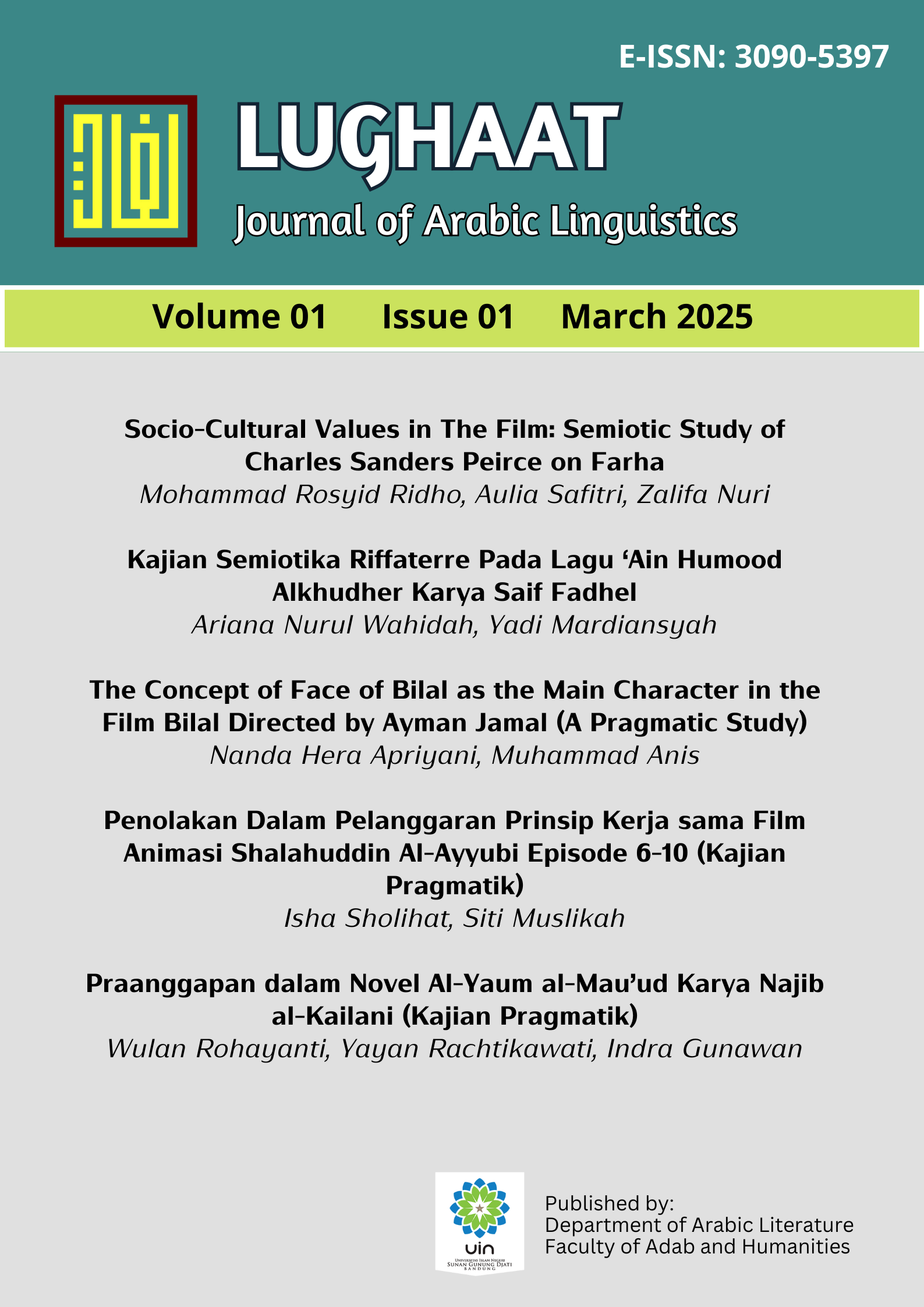Kajian Semiotika Riffaterre Pada Lagu ‘Ain Humood Alkhudher Karya Saif Fadhel
DOI:
https://doi.org/10.15575/lughaat.v1i1.1030Keywords:
'Ain, hermeneutik, heuristik, hipogram, matriks, modelAbstract
Songs are a form of oral literature that is not limited to entertainment, but also as a medium of expression that reflects emotions, culture, and social phenomena. Literary works such as songs have long been considered a type of poetry due to their capacity to communicate messages through the integration of language and music, evoking emotional responses in their audiences. The poetic nature of songs is often manifested through the use of specific melodies, rhythms, and tonal qualities that contribute to a continuous auditory harmony that transcends social boundaries such as race, ethnicity, and culture. So the analysis of the meaning of the lyrics of the song 'Ain popularized by Humood Alkhudher was carried out using Michael Riffaterre's semiotic study which focuses on the analysis of poetry (song lyrics). This study aims to examine: 1) Indirectness of expression, 2) heuristic and hermeneutic reading, 3) matrix, model, variant, and, 4) hypogram. This study was conducted with a descriptive-qualitative approach and semiotic analysis method, using the lyrics of the song 'Ain by Syaif Fadhel popularized by Humood Alkhudher as a research sample. The data collection technique used was document analysis. The results of the study show that: first, heuristic and hermeneutic readings contain religious values that reflect the behavior of a Muslim in being grateful for the blessings given by Allah; Second, the matrix of the song 'Ain is gratitude to Allah; Third, the model obtained is to order us to say good things and always be sincere: Fourth, there is one variant found in the song 'Ain, namely the nature of sincerity; Fifth, the potential hypogram in the lyrics of the song 'Ain reflects gratitude for the blessings given by Allah SWT, while the actual hypogram describes the reality of human life.
Downloads
Published
How to Cite
Issue
Section
Citation Check
License
Copyright (c) 2025 Ariana Nurul Wahidah, Yadi Mardiansyah

This work is licensed under a Creative Commons Attribution 4.0 International License.





